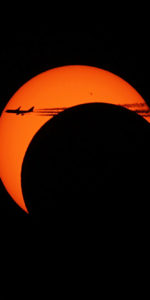
Iran is poised for the imminent launch of a Safir rocket carrying the Defense Ministry’s Fajr imaging satellite to begin tests of increasingly advanced spacecraft to build a viable Iranian space reconnaissance capability for use against Israel.
Whether Iran can build such a capability before an Israeli attack against its nuclear facilities is undetermined.
The planned May 23 liftoff of the 29 ton Safir on 64,000 lb. thrust is to place the 60 lb. Fajr (Dawn) satellite into low Earth orbit for 1.5 years of operations.
At the same time Iran is moving toward its first launch of the much larger Simorgh rocket that it has developed in connection with North Korea. That rocket closely mirrors the design of the North Korean rocket that failed in April.

A with previous Iranian space launch activity the U. S., Israel, France, the United Kingdom and other western governments are concerned that Iranian space activity is often a “wolf in sheep’s clothing” to provide a smokescreen for the test of ballistic missile technology.
The U. S. Defense Intelligence Agency (DIA) has told Congress that Iran may be capable of developing a 3,000 mi. range ICBM by 2015. An Iranian missile with that range could target the U. S.

The imaging satellite is also equipped with an Iranian experimental GPS receiver system.
The Fajr imaging resolution will be up to 500 meters (1,640 ft.) and it will also be the first Iranian satellite to use a Pulsed Plasma Thruster. The satellite was built by Iran Electronics Industries, a major military contractor.
Iran also plans the launch this year of the Sharif imaging satellite with 41 ft. resolution, good enough to possibly enable the Iranians to look down on Israeli Air Force ramps to gauge Israel’s preparations to possibly strike Iran.
Depending upon camouflage, the spacecraft would theoretically be able to see and count Israeli F-15s that are nearly 64 ft. long with a 42 ft. wingspan and F-16s that are 49 ft. long.
By the end of 2012 Iran also plans to launch the Tolou (Sunrise) satellite, its first SIGINT military signals intelligence satellite designed to eavesdrop on Israeli electronic emitters and communications.

The Tolou is to be launched on the first flight of the larger Simorgh booster which duplicates the North Korean No Dong like the one which failed on April 13. The Iranians had hoped to launch it in 2011, but technical delays forced a delay to 2012. The North Korean failure could add further delays.
A dozen Iranian managers and engineers attended the North Korean launch to observe launch operations and obtain test data.
The Simorgh (shown below with Iranian officials) is 89 ft long, and has a liftoff mass of 85 tons. Its first stage is powered by four engines that at liftoff will generate a total of 290,000 lb. of thrust. The Simorgh will be capable of putting a 130 lb. payload into a 310 mi. low Earth orbit.
The rocket engine group used with the rocket essentially duplicates the engines used in the North Korean No-Dong rocket and collaboration between Iran and North Korea is an inherent part of the project.





